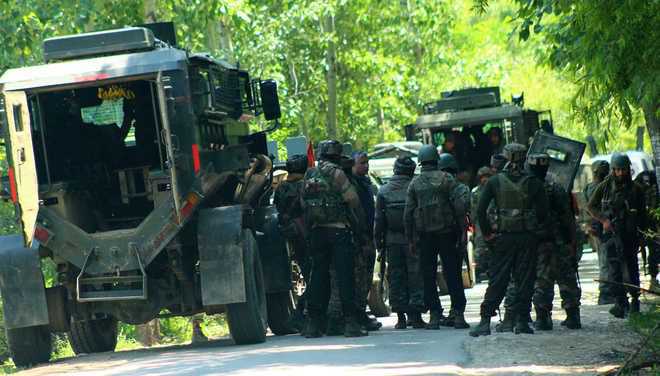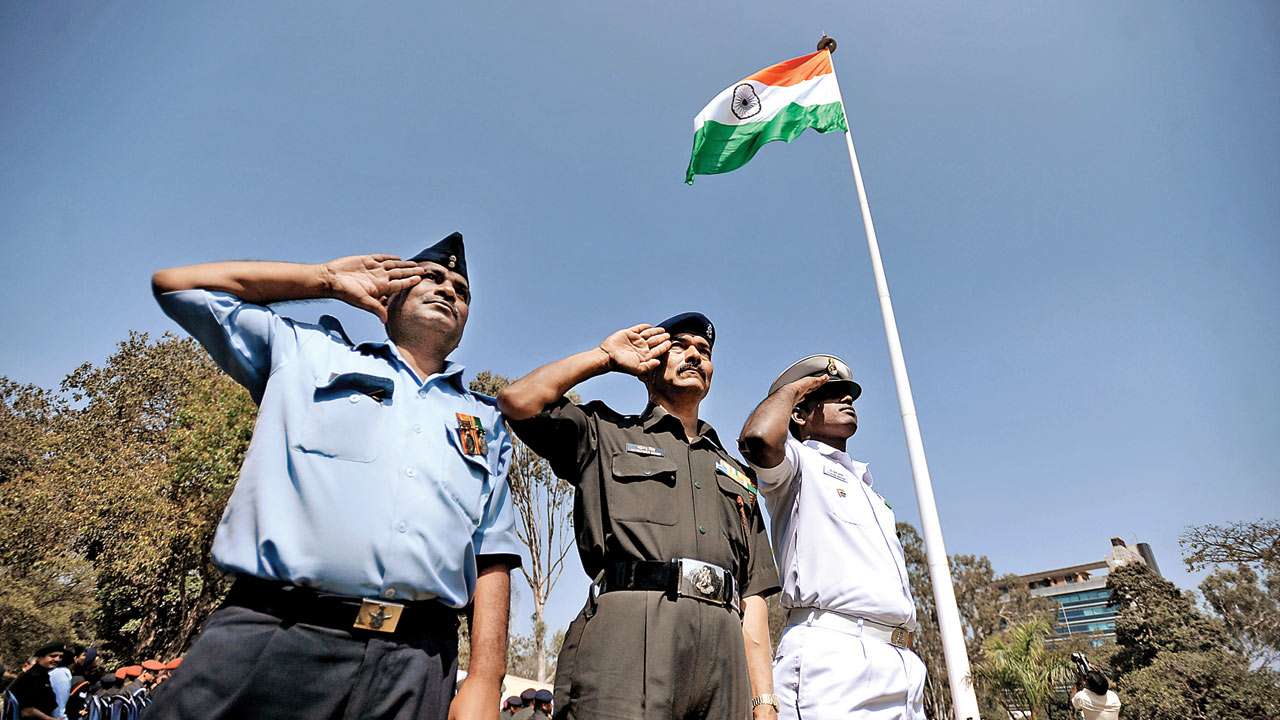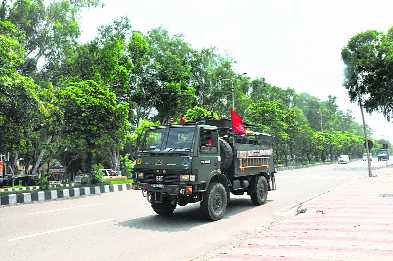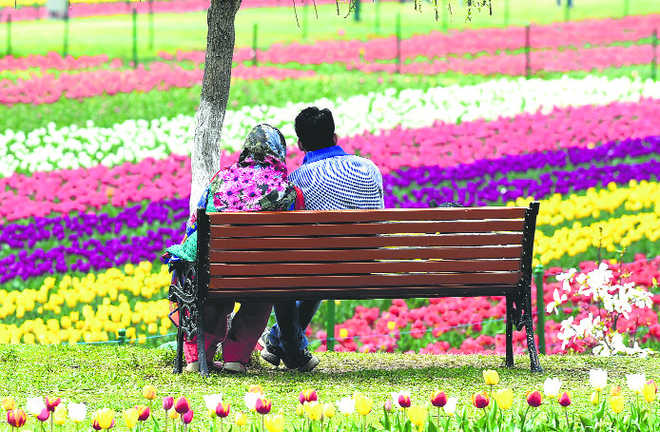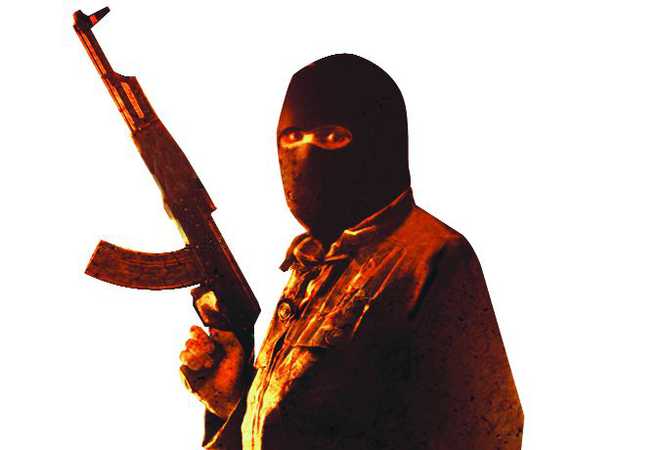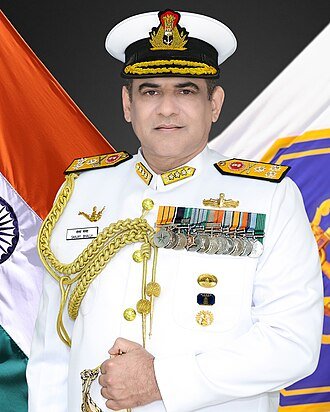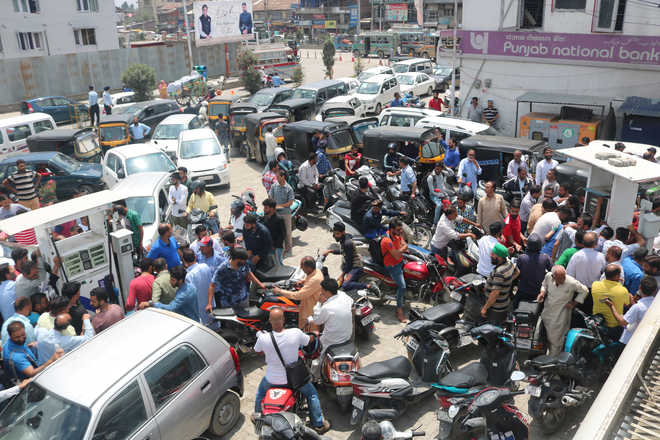
People queue up at fuel station in Srinagar on Sunday. Tribune photo: Mohammad Amin War
Majid Jahangir
Tribune News Service
Srinagar, August 5
Restrictions were imposed in Srinagar district under Section 144 of the CrPC with effect from midnight. There would be no movement of public. There will be a complete bar on holding any kind of public meetings or rallies. Identity cards of “essential services officials” will be treated as movement passes wherever required.
Meanwhile, all educational institutions were ordered closed across the state as a precautionary measure till further orders.
Internet services on mobile were stopped in Kashmir in the evening, while broadband was also cut late in the night. Voice calls were expected to be cut in a phased manner.
In Jammu too gathering of four or more persons was prohibited under Section 144. The University of Jammu also announced closure, and that all UG and PG examinations to be held on August 5 stood postponed. Fresh dates would be notified later.
Amidst panic and confusion over what was happening in Srinagar as well as Kashmir at large, there were also unconfirmed claims from mainstream leaders, including Omar Abdullah, that restrictions had been imposed on their movement.
Omar Abdullah✔@OmarAbdullah
I believe I’m being placed under house arrest from midnight tonight & the process has already started for other mainstream leaders. No way of knowing if this is true but if it is then I’ll see all of you on the other side of whatever is in store. Allah save us 9,385 people are talking about this
The Governor was in a meeting with the Chief Secretary, Advisers, DGP, ADG, and IG among others, late at night.
All eyes are on Parliament, which resumes its business on Monday, even as uncertainty and fear have further deepened in Kashmir.
In a tweet, former chief minister Omar Abdullah said: “If officers in the state government are to be believed mobile internet is going down now, an unofficial curfew is going to start…”
Omar Abdullah✔@OmarAbdullah
To the people of Kashmir, we don’t know what is in store for us but I am a firm believer that what ever Almighty Allah has planned it is always for the better, we may not see it now but we must never doubt his ways. Good luck to everyone, stay safe & above all PLEASE STAY CALM.3,852
Kashmir has been on edge for the last few days after New Delhi rushed additional companies and asked Amaranth pilgrims and tourists to leave Kashmir. The series of government advisories in past few days have created massive panic amid reports that New Delhi was planning a major political decision on Kashmir.
Mehbooba Mufti✔@MehboobaMufti
In such difficult times, I’d like to assure our people that come what may, we are in this together & will fight it out. Nothing should break our resolve to strive for what’s rightfully ours.
On Sunday, while shops were open and traffic plied normally, there was a general scare among the masses. The fear got further worsened when reports emerged that Union Cabinet was scheduled to meet at 9.30 am Monday morning. Besides the ruling BJP has issued a whip to its parliament members asking them to remain compulsorily present in both Houses from August 5 to 7.
Mehbooba Mufti✔@MehboobaMufti
How ironic that elected representatives like us who fought for peace are under house arrest. The world watches as people & their voices are being muzzled in J&K. The same Kashmir that chose a secular democratic India is facing oppression of unimaginable magnitude. Wake up India
With the Centre keeping cards to their chests, common Kashmiris were seen stocking essentials and medicines.
Sajad Lone✔@sajadlone
It is imperative that we stay calm. Violence has cost us thousands of lives. If we disagree— there r many ways to express dissent. Nothing is irreversible. And nothing is permanent. Justice will prevail.
Meanwhile, an order issued by District Magistrate, Anantnag, asked all petrol dealers against resorting to the sale of fuel without the permission of the DM or the officer authorised on his behalf. The order, it said, has been issued in view of panic stocking by general public in the last few days, which has caused considerable shortage of petroleum products.
Anticipating that the restrictions might come into force, a letter addressed to the Srinagar District Magistrate by Medical Superintendent of CD Hospital, Srinagar, sought “curfew passes” for the hospital staff.
“With no clarity, we are really worried,” said Shabir Ahmed, a Srinagar resident. “These days we wake up to new fears. Now all eyes are on Monday when Parliament proceedings will begin. It seems we are waiting for some doomsday.”
Members of the business community, too, are seeking clarity from the Centre so that a sense of security was restored among the public.
“On behalf of the business community, we demand restoration of a sense of security amongst the general public, proper assessment of business losses caused and protection against future losses,” said Kashmir Chamber of Commerce and Industry (KCC&I) secretary-general Farooq Amin.
Authorities have stepped up security deployment at vital installations and sensitive areas amid heightened terror threat and flare up of hostilities with Pakistan along the Line of Control (LoC).
After the Jammu and Kashmir administration curtailed the Amarnath Yatra and asked pilgrims and tourists to leave the valley at the earliest on Friday, anxious residents continue to throng markets to stock on essentials and serpentine queues have been visible outside shops and fuel stations.
Cricket trials postponed
Former India all-rounder Irfan Pathan, the mentor of Jammu and Kashmir state teams who was in Srinagar to oversee the trials for the U-16 (Vijay Merchant Trophy) and U-19 (Cooch Behar Trophy) squads, has left Srinagar, along with the young players.
“We have for the time being postponed the second phase of junior team trials…since there has been a government advisory, I had a meeting with Jammu and Kashmir Cricket Association…Accordingly, it was decided that boys need to be sent back home,” Pathan told PTI.
Various educational institutions also directed their students to vacate hostels.
Additional paramilitary forces, which arrived here last week, have been deployed across the city and in other vulnerable areas of Kashmir Valley, the officials said.
The strength of the security personnel has been increased around vital installations such as the civil secretariat, police headquarters, airport and various central government establishments in the city, they said.
Barricades have been erected on many arterial roads, including the entry and exit points to Srinagar, the summer capital of the state.
Riot control vehicles have also been kept on standby in some areas where apprehension of law and order disturbances is more, the officials added. — With PTI inputs
The chief minister himself is taking regular updates on the situation at the border, said the spokesperson.








